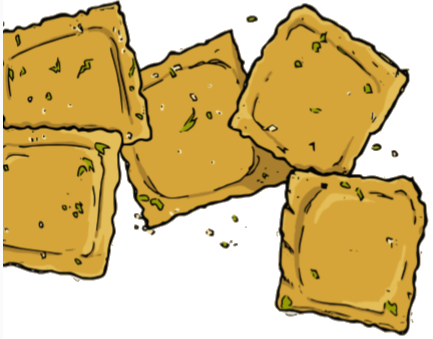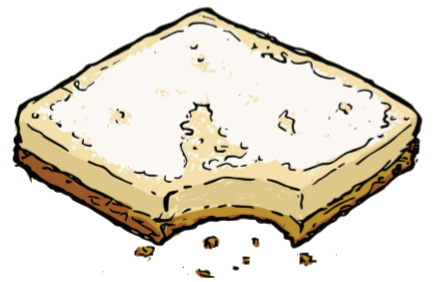St. Louis’s Identity, Told Through Food
Food has long held greater significance than the nutrition it provides. From sharing a meal around a dinner table, to adventuring to new neighborhoods to try out a famous restaurant, food provides a way for Wash U students to connect with one another and the city they now call home. Perhaps most significantly, food serves as an important source of urban community, culture, and identity. Generation-spanning debates over New York Style Pizza versus Chicago Deep Dish, which Southern state has the best style of barbeque, and even nominal distinctions (would you like a soda, a pop, or a coke?) prove this critical interplay between food and regional culture.
Food can also provide a lens into the past: revealing new perspectives on times gone by, and the people who lived through them. This holds especially true for St. Louis – a city with a long and rich food tradition. Starting with its foundation as a French settlement in the 18th century, the cuisine of this city has been shaped and molded by new waves of immigration, historical events, and invention. However, St. Louis is also a city on the decline. Once boasting more than 850,000 residents in 1950 (the 8th most populous U.S. city at the time), the population has since shrunk to around 308,000. The city’s economy has also stagnated in the last half century due to suburbanization and a decline in manufacturing jobs. Racial tensions drove residents everywhere but the urban center itself, as white families fled to the Western suburbs to escape the heterogeneity of the city, and racist zoning policies forced black residents to settle Northeast of the Mississippi into Illinois. Facing dilapidated streets and an eerily empty downtown, St. Louis tells the classic story of a Rust Belt City. Along with 500,000 residents, St. Louis has lost a lot of what once gave it a unique identity. Despite these challenges, the city has been able to cling on to a key aspect of its selfhood: its quirky and one-of-a-kind delicacies. Many food favorites of Wash U students are unique to this city, and continue to inject life and personality into this still-vibrant community. In this feature, we explore the brief histories of some of St. Louis’ and Wash U’s most iconic eats.
Toasted Ravioli
Toasted ravioli is one of the most famous comfort foods of St. Louis. This dish, affectionately called toasted rav, is a deep fried stuffed pasta creation, served with a sprinkling of Parmesan and a side of rich marinara sauce – it’s clear to see why it is a beloved favorite. What is surprising is that a dish that seems so logically good, was an accident! Dating back to the 1950s, toasted ravioli is said to be invented in a restaurant called Angelo Oldani, located in the famous Italian-American neighborhood, the Hill. Legend has it that on a busy day, the owner of the restaurant passed on the task of cooking ravioli to a German cook. Unknowingly, the cook dropped the ravioli into a pot of boiling oil instead of water. The result was a deep fried dish that Angelo tried to recover by topping it with Parmesan. 60 years later, toasted rav continues to be enjoyed by St. Louis residents. It stands as a reminder of the term “happy accident.” It also is a testament to the many immigrant communities that have shaped the St. Louis community throughout history.
Ted Drewes
Inarguably, the most famous frozen treat [FM5] in all of St. Louis is the legendary Ted Drewes. To be precise, Ted Drewes serves frozen custard, and has been doing so for over 80 years. Started by Ted Drewes Sr. in 1929, the first Ted Drewes store was actually in Florida. An STL native, Drewes was a famous tennis star and would travel to Florida to continue playing the game during the winter months. Shortly after, he opened up two stores in St. Louis, the most famous one today being the 12 window giant Chippewa location, located on the historic route 66. Ted Drewes’ most famous offering is the “concrete”: a shake so thick it can be turned upside down.
Breweries
St. Louis has a long and rich history with breweries, institutions that continue to serve as major employers of the city, and help to drive its economy and revitalize neighborhoods. The influx of German and Bohemian immigrants to the Soulard neighborhood of St. Louis during the 1930s initially brought the brewery industry to the city, as many of these immigrants brought along an unprecedented Beer-making ability. German immigrant John Adam Lemp pioneered the industry, who abandoned his grocery to sell exclusively lager beer at brewery on South Second Street in 1840. What became known as The William J. Lemp Brewing Co. became an industrial powerhouse before abruptly shutting down as a result of prohibition in 1919.
Of course, the most famous brewery to come out of St. Louis is AnheuserBusch, which adopted the moniker in 1879 after German-born businessman and pharmacist Eberhard Anheuser began working with his son-in-law, Adolphus Busch. The pair pioneered many practices in the brewing industry, including pasteurization to keep beer fresh, the introduction of pilsner beer to the United States, mechanical refrigeration, and refrigerated railroad cars that ensured both the longevity and geographic reach of the product. The company even managed to survive prohibition, shifting production to non-alcoholic items. Today, the Anheuser-Busch Brewery offers free tours to visitors, attracting locals, students, and tourists alike.
In more recent years, however, an explosion of craft breweries has marked the beer landscape of St. Louis. Perhaps the 2008 acquisition of AnheuserBusch by Inbev, 21st century worldwide monolith, has given the Budweiser name a less local feel. Bud Light is, in fact, losing market shares. Indeed, the president of O’Fallon Brewery, an increasingly competitive craft company in the suburbs, once worked as an Anheuser-Busch marketing executive. Regardless, these trendy, local companies have experienced a huge boom in popularity. Today, there are more than 81 craft breweries in Missouri (up from 54 in 2011), with several dozen of these existing in the St. Louis area alone. While the industry is constantly growing, with new breweries and brewpubs opening every month, the most ubiquitous name remains Schlafly. Like Anheuser-Busch before it, Schlafly was a pioneer of its time when it first opened in 1991. Under the St. Louis Brewery, the city’s largest craft brewery, Schlafly injected new life into St. Louis’ beer industry in a post-Prohibition America, offering an exciting alternative to mainstream lagers. While Schlafly exists largely as a regional powerhouse, beer drinkers nationwide have felt the effects it had on the industry.
Fitz’s
Fitz’s Root Beer exists as more than just another restaurant on the Delmar Loop, but as a St. Louis success story. Fitz’s initially established its place as a local staple at a drive-in restaurant in 1947. After closing down some years later, Fitz’s was reimagined as a soda microbrewery within a vintage-style restaurant in 1993. Mass producing the root beers using a refurbished bottling line from the 1940s (originally used for beer, of course) and kegging the soda in huge barrels to be served on-tap at the restaurant, Fitz’s treats its sodas like a high-end beer. Since the 90s, Fitz’s has become iconic as the best of the best and a beverage unique to St. Louis, with a secret formula to boot. Fitz’s Root Beer: “If it wasn’t better, we wouldn’t bother!”
Gooey Butter Cake
Gooey Butter Cake can be found in every St. Louis travel guide, a must have for tourists and locals alike. Two stories exist about its origins. Like toasted rav, it too started as a culinary mix-up. The first legend claims that a German baker in the 1930s (back then, the German immigrant community dominated the baking industry) accidentally switched the proportions of butter and sugar in his cake recipe -– resulting in a gooey, bar-like creation. The more accepted story is that in a bakery owned by John Hoffman, two buttes were routinely used: deep butter was mixed into the batter of cakes and gooey butter and was used as a decorative adhesive. One day, the butters were accidentally swapped in a recipe, but as to not waste resources during the Great Depression, Hoffman baked and sold the cake anyways. It became extremely popular and began appearing in bakeries around the city, to be continuously enjoyed to this day!
Hanna Khalil ‘20 studies in the College of Arts & Sciences. She can be reached at hannakhalil@ wustl.edu. Max Lichtenstein ‘20 studies in the College of Arts & Sciences. He can be reached at max.lichtenstein@wustl.edu.



